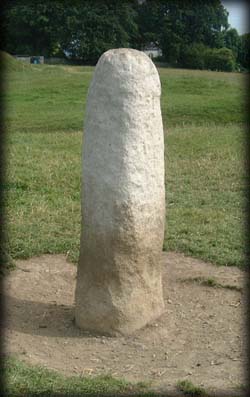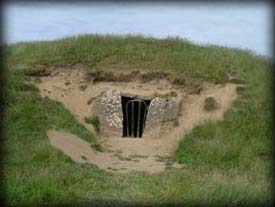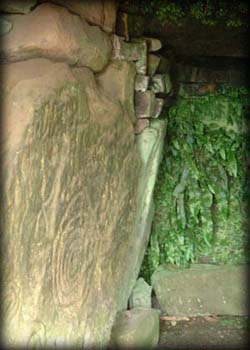
The Lia Fail
Hill of Tara
The Hill of Tara was the Coronation place of Irelands pre-Christian kings, and is one of Irelands more famous sites. This was not an hereditary Kingship, the kings either won it in battle or were chosen for it. There are a number of earthworks remaining on the hill, they are inside a large iron age enclosure known as a Hill Fort. To the South lies a ring fort known as King Laoghaire's Fort, North of this in the middle of the enclosure are two linked ring forts, to the west is Cormacs House and to the east is The Royal Seat, in the centre of Cormacs House stands a pillarstone which is believed to be the Lia Fail (stone of Destiny) or Coronation Stone. The pillarstone, a prehistoric phallic symbol, originally stood near a 4,000 year old neolithic passage tomb known as the Mound of the Hostages, in the Northern part of the enclosure.

Mound of the Hostages

Mound of the Hostages Interior
Situated: Off theDublin to Navan road. The Hill of Tara is well signposted, It is about 1 mile west of the main road, and has a Car Park and Visitor Centre.
Discovery Map 36: H 955 213. Last visit February 2004.
Photos: Jim Dempsey.